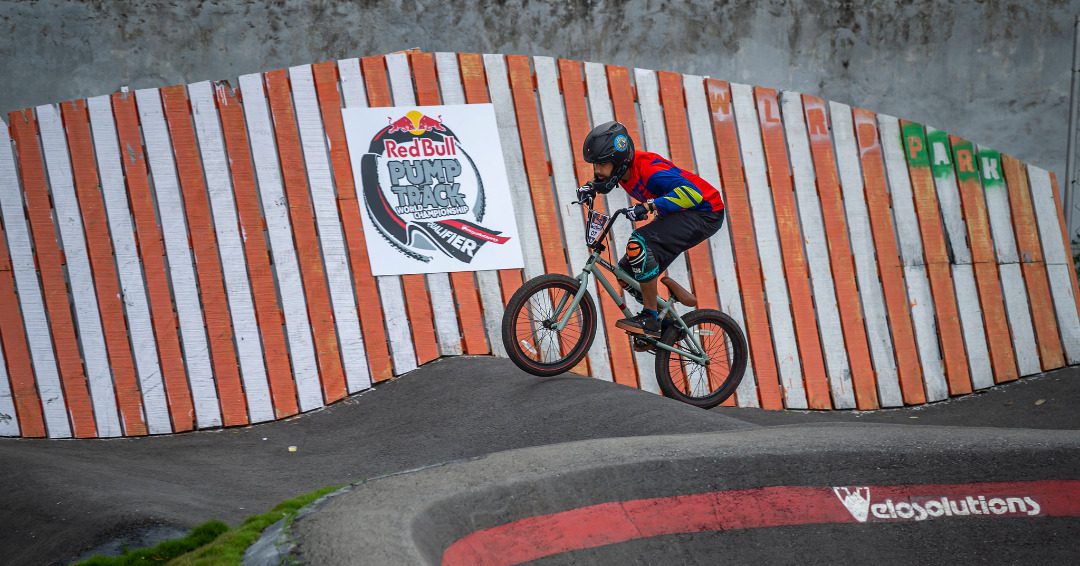(September 12, 2021) After Steven Spielberg‘s parents divorced, he became friends with an imaginary character and used to engage in a conversation with this friend. Little did he know that this imaginary friend would one day inspire him to make a movie and that’s how E.T The Extra-Terrestrial, the sci-fi movie was made and went on to become one of the highest grossing movies of all times.
The plot revolves around a boy who befriends an extraterrestrial stranded on earth. The scene that would remain etched in the minds of audiences is a chase scene towards the end of the movie where ET is put in a basket with a cover over it and three of the boys’ friends trying to run away from the police on their bicycles. That sequence inspired kids and adults world over to ride the bicycle popularly called the BMX (Bicycle Motocross bikes).
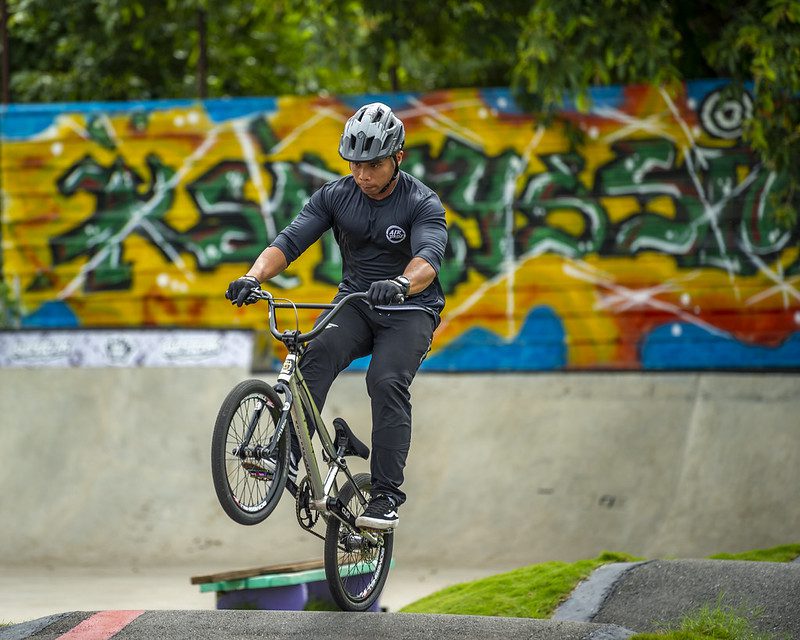
BMX Racing is popular in Hyderabad ((Image Courtesy: Vaqaas Mansuri)
What began in California as an imitation of motocross riders, but on bicycles, soon made its way to the Netherlands when Gerrit Does, a Dutch motocross trainer, introduced BMX in Holland after his visit to the US in 1974. Three decades later, in 2008, BMX racing became an Olympic sport. In 2016, BMX freestyle gained a level of legitimacy when it came under the umbrella of the worldwide governing body for all cycling, the Union Cycliste International (UCI) France.
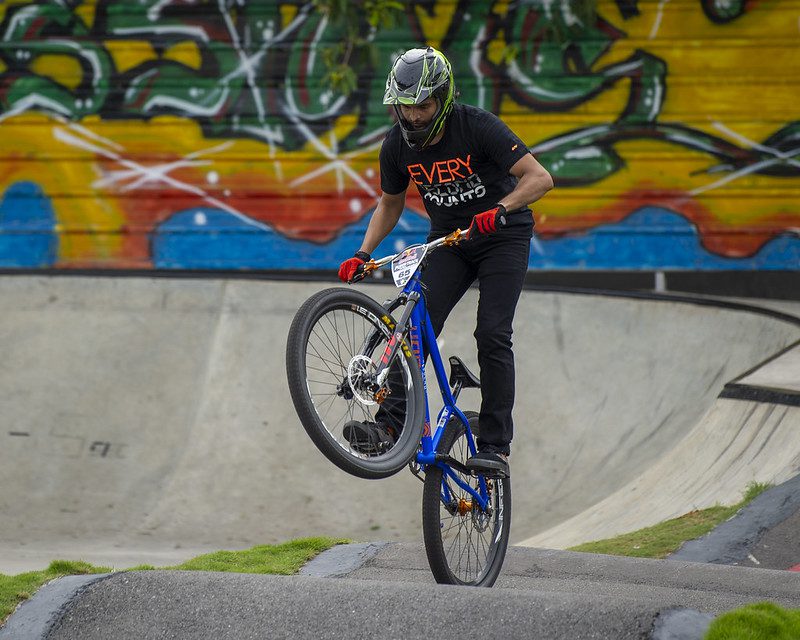
Red Bull Pump Track Championship 2019 (Image Courtesy: Vaqaas Mansuri)
(Image Courtesy: Vaqaas Mansuri)
Circa 1980s, one could see few folks BMXing on the stairs of Mount Mary Church at Bandra, Mumbai. That was also the time when International BMX Federation was formed in 1981. Credit for starting the scene goes to Rahul Mulani who began BMXing, organized BMX jams and went on to set-up India’s first BMX store. Not many may know that BMX is one of the oldest cycle sports in India but followed and practiced by very few. Expensive bikes, no proper safety gears or tracks to practice at, the BMXing has been on a slow growth among the cricket-hoot Indian masses.
However, the sport slowly made its way from an unknown urban activity to become an everyday recreational sport in cities like Pune, North Eastern India, Chandigarh and Hyderabad. Though still nascent, the BMX scene in India has its bright spots.
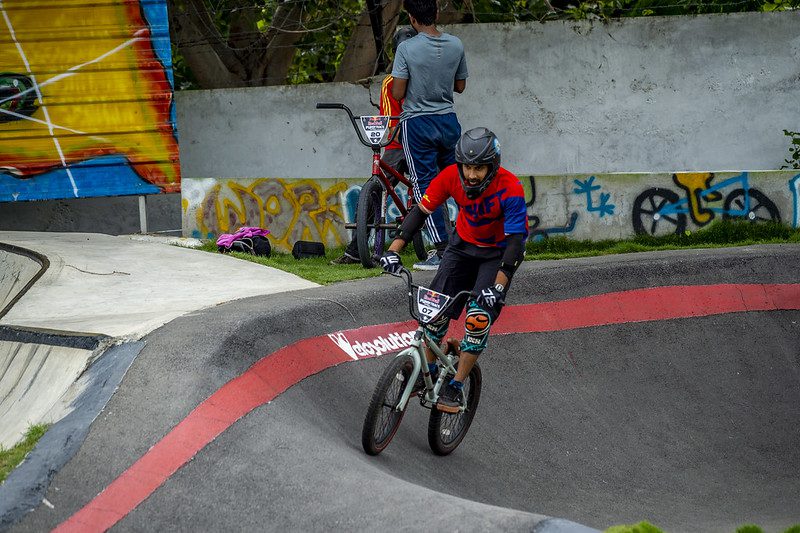
BMX racer at Red Bull Championship 2019 (Image Courtesy: Vaqaas Mansuri)
Avid BMX rider, Hamza Khan brought the sport to Hyderabad when he established India’s first ever and only asphalt pump track, The WallRide Park, heralding the birth of the sport in the city. Hamza roped in global pioneers and pump track specialists Velosolutions Switzerland to build the track on his family-owned land in Peeran Cheruvu on the outskirts of Hyderabad. The track has a series of twists, turns and jumps and in the past few years has become a hangout for those seeking an adrenaline rush while also providing a great practice and training ground for a number of talented riders.
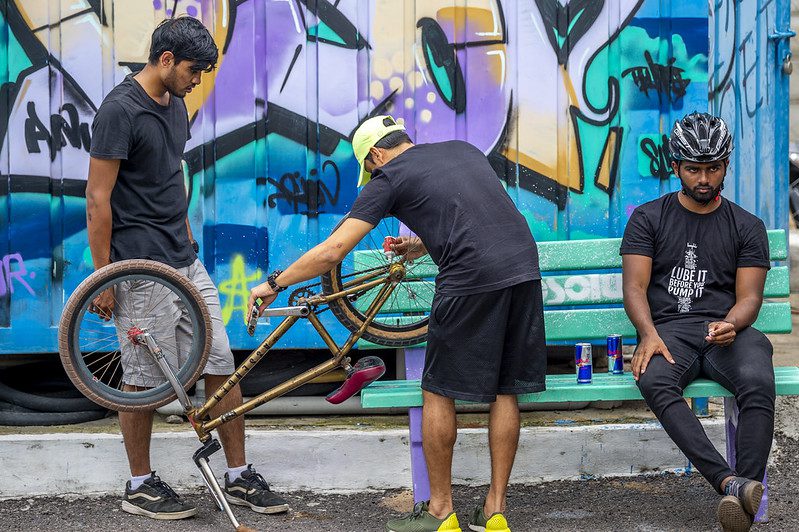
BMX racer oiling his bike (Image Courtesy: Vaqaas Mansuri)
Within two years of its opening, the track gained recognition from Union Cycliste Internationale (UCI) and became a stop for the Red Bull Pump Track Championship in 2019 hosting the Indian qualifier featuring riders from the country and overseas for a ticket to the finals that would be held in Switzerland. WallRide has become a place of escape for more than just the thrill-seekers. Hamza says, “The place has become more diverse with not just kids and youngsters but even adults coming to have a great time. It’s fantastic to see participation in BMX continuing to grow.”
However, just as things had begun to look up for the sport, COVID-19 struck and virtually every aspect of the pump track operations were completely shut down. For a niche sport such as this, bouncing back is time consuming with drain of financial resources; more so since it is self-funded with no external help either from any sporting association or the Government. However, once the unlock began, things began to improve: being an individual sport, all it needed were a few operational adjustments for the path to be cleared for training and also to safely host events. Hamza is optimistic of seeing more participation in this sport and has curated a championship exclusive to India called RevJam (Revolutionary Jam).
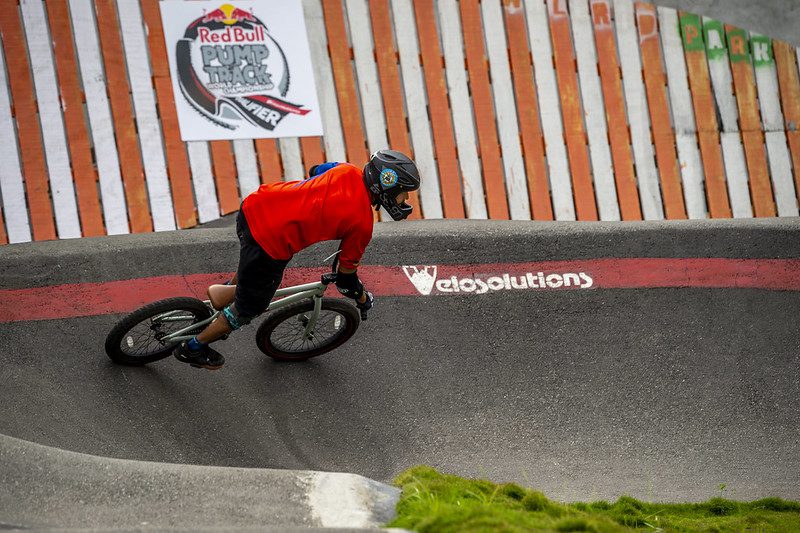
BMX racer on pump track (Image Courtesy: Vaqaas Mansuri)
A few among the riders who train at his track are aspiring to aim for the pinnacle of all sporting events – the Olympics. Hamza adds, “Our plans are aimed at producing riders of international repute in the future and also encouraging a sustainable growth of BMX.”
Although the future of BMX in India isn’t certain like many other sports in the roster, but the fact remains that from its humble beginnings it has come quite far in the past 30-40 years. And until it gains prominence there’s no sitting on the bench in this individualized sport.
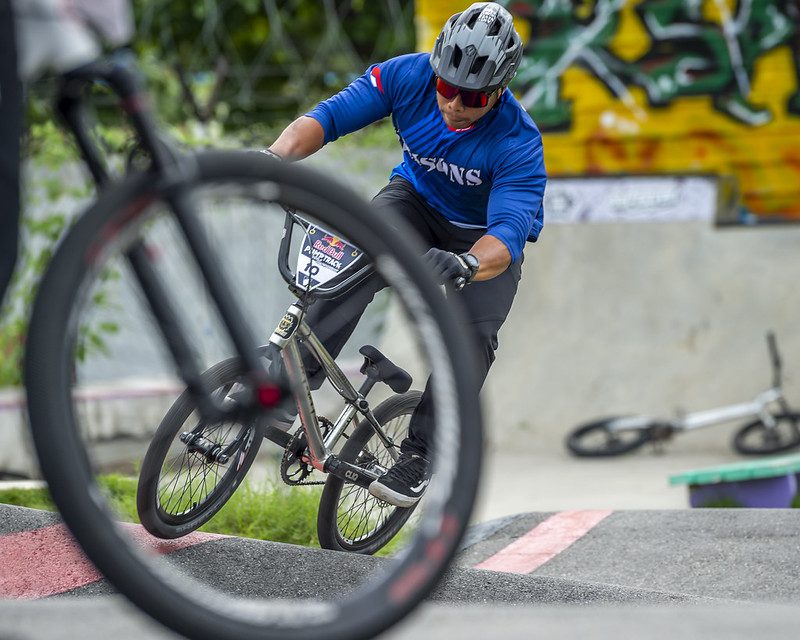
BMX racing in Hyderabad (Image Courtesy: Vaqaas Mansuri)
Dhroov Rajpal, is one of the country’s best BMXers who also builds skate parks. He feels the number of BMXers in the country is growing and they have a huge following on social media. He has built 8 skate parks in India and has a few more to come which can facilitate more newcomers to take up the sport. Dhroov himself is the BMX winner at the India Extreme Nationals conducted by Xtreme Sports Association of India – a body with official recognition formed for the purpose of developing and promoting extreme sports in India and affiliated to Asian Extreme Federation
India’s BMX veteran and owner of the first BMX store, Rahul Mulani, hopes this sport gets a huge fillip as he doesn’t see much happening at a desired pace in the sport. On the future of this sport he says, “As a country, we are not open to accepting some sports because of our upbringing or preference for racket/stick sports. We like to play safe. Further the sport has not caught on because of lack of infrastructure and acceptance of this genre. Anyone wishing to pursue BMX racing will have to do it pretty much on their own with no support from any sporting association. I see this sport taking some concrete shape decades from now.”

